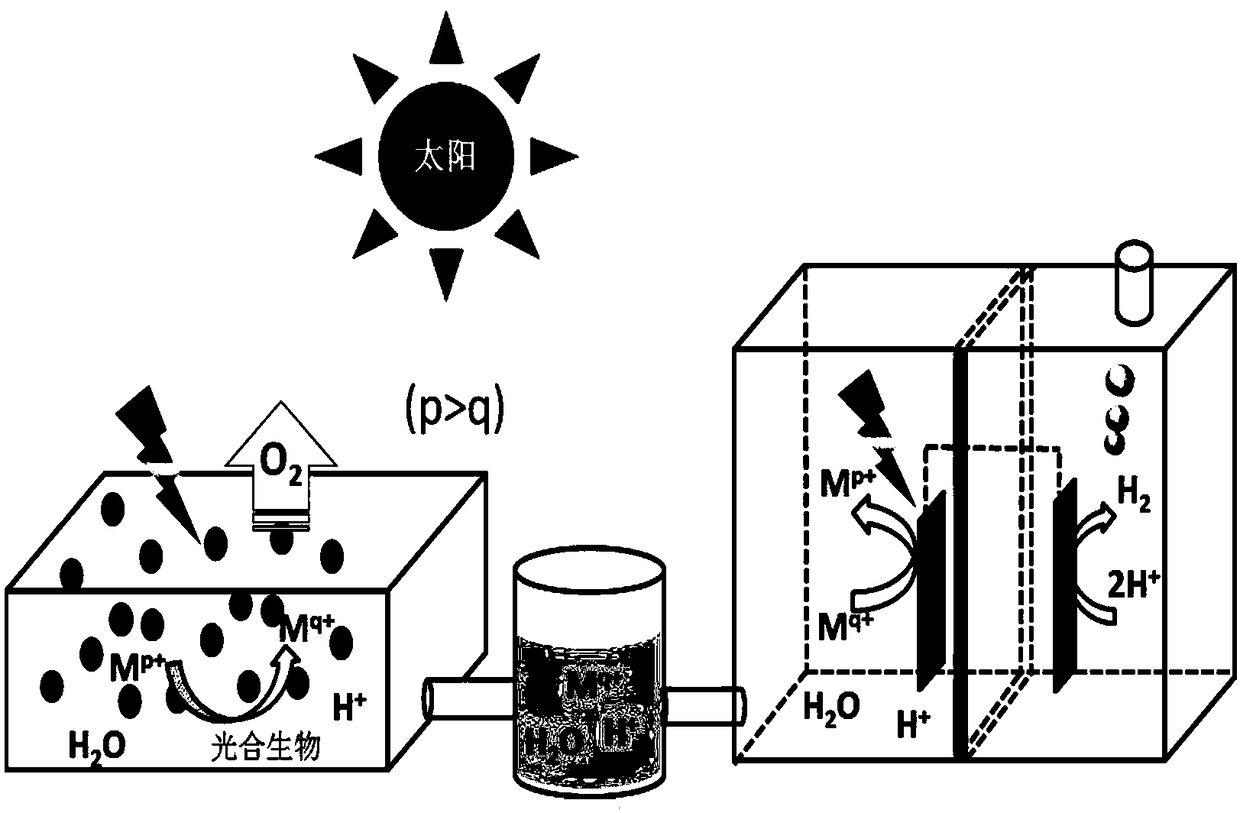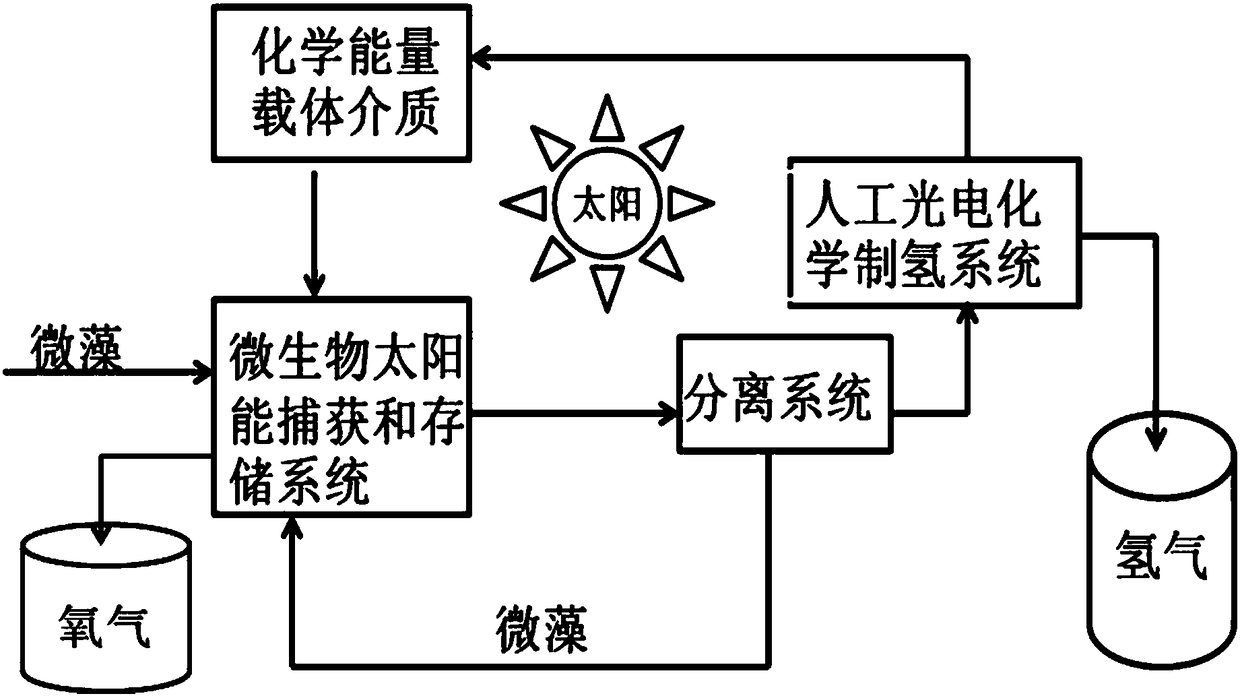Photosynthesis and (photo-catalysis) electro-catalysis combination system separated type hydrogen production method through water splitting
A technology of photosynthesis and photoelectric catalysis, applied in the direction of electrolysis process, electrolysis components, electrodes, etc., can solve the problems of decreased activity of microalgae, low reaction efficiency, difficult separation, etc., and achieve the effect of low cost
- Summary
- Abstract
- Description
- Claims
- Application Information
AI Technical Summary
Problems solved by technology
Method used
Image
Examples
Embodiment 1
[0043] This example evaluates the activity of reducing potassium ferricyanide by photosynthetic oxygenated water of Chrysopsis zhanjiangensis.
[0044] Take 20 milliliters of Zhanjiang Isoflagellate bath with a bath density of 50 million cells / ml and stir in the reactor, add a potassium ferricyanide seawater solution with a concentration of 5 mM, and at room temperature, use a light intensity of 300E / m 2 the s -1 The fluorescent lamp is the light source, and the photosynthesis reduces potassium ferricyanide to produce potassium ferrocyanide. The content of the ion pair concentration after a certain period of light is analyzed by ultraviolet-visible absorption spectrum, and the reaction results are as follows: image 3 .
Embodiment 2
[0046] This example evaluates the effect of incident light intensity on the activity of reducing potassium ferricyanide by photosynthetic oxygenated water of Isoflagellates Zhanjiang.
[0047] Take 20 ml of Zhanjiang Isoflagellate bath with a bath density of 50 million cells / ml and stir in the reactor, add potassium ferricyanide seawater solution with a concentration of 5 mM, at room temperature, control the fluorescent light source to illuminate the reaction with different light intensities system, photosynthesis reduces potassium ferricyanide to produce potassium ferrocyanide, and analyzes the concentration of electricity pairs after a certain period of time by ultraviolet-visible absorption spectroscopy. The reaction results are as follows Figure 4 .
Embodiment 3
[0049] This example evaluates the effect of algae density on the activity of reducing potassium ferricyanide by photosynthetic oxygenated water of Isoflagellates Zhanjiang.
[0050] Cultivate Zhanjiang Isoflagellates to a certain algae density under the same conditions as other conditions. Take 20 ml and stir it in the reactor, add potassium ferricyanide seawater solution with a concentration of 5 mM, at room temperature, light intensity at 300 μE / m 2 the s -1 The fluorescent lamp is the light source to illuminate the reaction system, and the photosynthesis reduces potassium ferricyanide to produce potassium ferrocyanide. The content of the ion pair concentration after a certain period of light is analyzed by ultraviolet-visible absorption spectrum, and the reaction results are as follows: Figure 5 .
PUM
 Login to View More
Login to View More Abstract
Description
Claims
Application Information
 Login to View More
Login to View More - R&D
- Intellectual Property
- Life Sciences
- Materials
- Tech Scout
- Unparalleled Data Quality
- Higher Quality Content
- 60% Fewer Hallucinations
Browse by: Latest US Patents, China's latest patents, Technical Efficacy Thesaurus, Application Domain, Technology Topic, Popular Technical Reports.
© 2025 PatSnap. All rights reserved.Legal|Privacy policy|Modern Slavery Act Transparency Statement|Sitemap|About US| Contact US: help@patsnap.com



